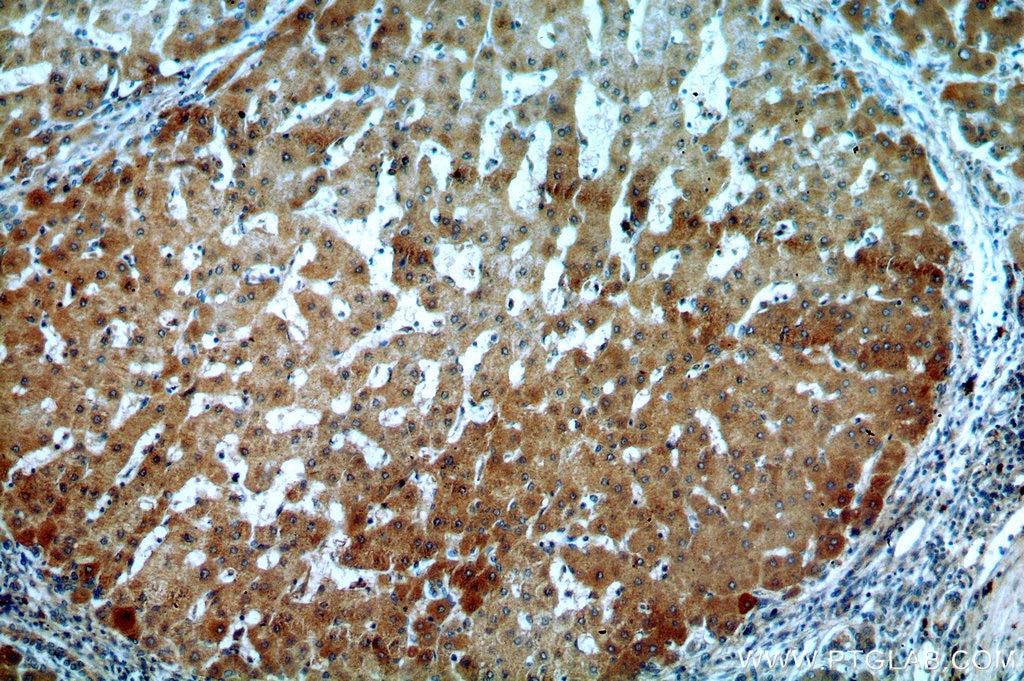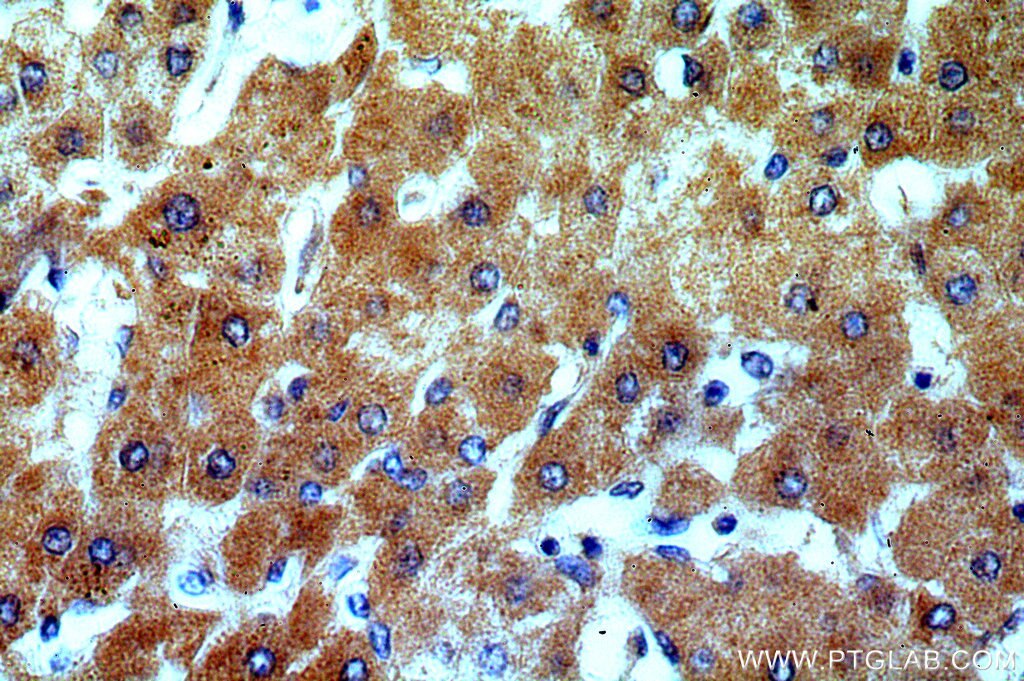Anticorps Polyclonal de lapin anti-TSPAN33
TSPAN33 Polyclonal Antibody for WB, IHC, ELISA
Hôte / Isotype
Lapin / IgG
Réactivité testée
Humain, rat, souris
Applications
WB, IHC, ELISA
Conjugaison
Non conjugué
N° de cat : 14329-1-AP
Synonymes
Galerie de données de validation
Applications testées
| Résultats positifs en WB | tissu cérébral humain, tissu plasmatique humain |
| Résultats positifs en IHC | tissu de cirrhose hépatique humain il est suggéré de démasquer l'antigène avec un tampon de TE buffer pH 9.0; (*) À défaut, 'le démasquage de l'antigène peut être 'effectué avec un tampon citrate pH 6,0. |
Dilution recommandée
| Application | Dilution |
|---|---|
| Western Blot (WB) | WB : 1:200-1:1000 |
| Immunohistochimie (IHC) | IHC : 1:20-1:200 |
| It is recommended that this reagent should be titrated in each testing system to obtain optimal results. | |
| Sample-dependent, check data in validation data gallery | |
Applications publiées
| WB | See 1 publications below |
Informations sur le produit
14329-1-AP cible TSPAN33 dans les applications de WB, IHC, ELISA et montre une réactivité avec des échantillons Humain, rat, souris
| Réactivité | Humain, rat, souris |
| Réactivité citée | souris |
| Hôte / Isotype | Lapin / IgG |
| Clonalité | Polyclonal |
| Type | Anticorps |
| Immunogène | TSPAN33 Protéine recombinante Ag5597 |
| Nom complet | tetraspanin 33 |
| Masse moléculaire calculée | 32 kDa |
| Poids moléculaire observé | 64-72 kDa |
| Numéro d’acquisition GenBank | BC044244 |
| Symbole du gène | TSPAN33 |
| Identification du gène (NCBI) | 340348 |
| Conjugaison | Non conjugué |
| Forme | Liquide |
| Méthode de purification | Purification par affinité contre l'antigène |
| Tampon de stockage | PBS avec azoture de sodium à 0,02 % et glycérol à 50 % pH 7,3 |
| Conditions de stockage | Stocker à -20°C. Stable pendant un an après l'expédition. L'aliquotage n'est pas nécessaire pour le stockage à -20oC Les 20ul contiennent 0,1% de BSA. |
Informations générales
TSPAN33 is a membrane protein of the tetraspanin superfamily, which are characterized by the presence of four conserved transmembrane regions. Tetraspanins have been involved in diverse processes such as cell activation and proliferation, adhesion and motility, differentiation, and cancer. TSPAN33 belongs to the TSPANC8 subfamily, which also include TSPAN5, TSPAN10, TSPAN14, TSPAN15, and TSPAN17. It has been reported that TSPANC8 tetraspanins interact with ADAM10 and have a conserved function in the regulation of ADAM10 trafficking and activity, thereby positively regulating Notch receptor activation (PMID: 23091066; 23035126).
Protocole
| Product Specific Protocols | |
|---|---|
| WB protocol for TSPAN33 antibody 14329-1-AP | Download protocol |
| IHC protocol for TSPAN33 antibody 14329-1-AP | Download protocol |
| Standard Protocols | |
|---|---|
| Click here to view our Standard Protocols |
Publications
| Species | Application | Title |
|---|---|---|
J Immunol The Tetraspanin TSPAN33 Controls TLR-Triggered Macrophage Activation through Modulation of NOTCH Signaling. |





